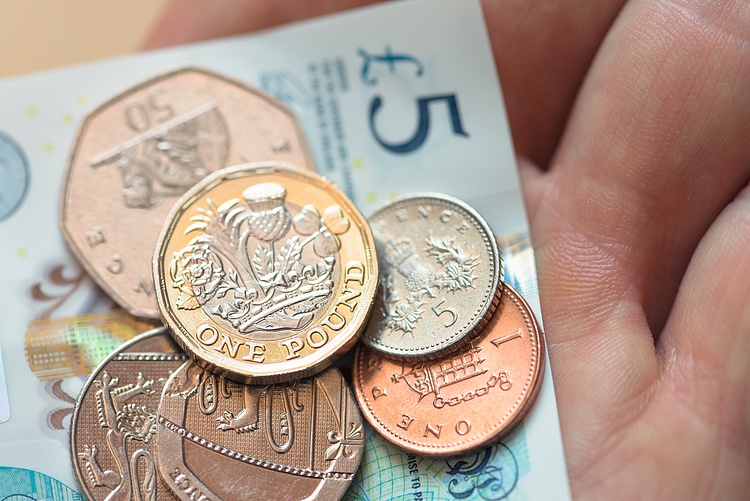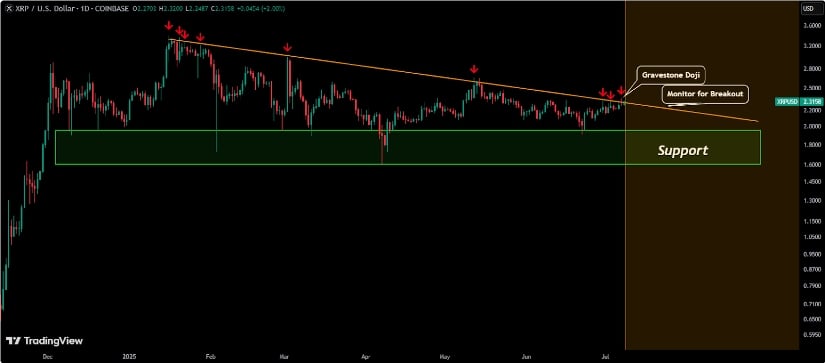Category: Forex News, News
Pound Sterling closes in on next key resistance
- GBP/USD trades slightly above 1.2750 in the European morning on Monday.
- 1.2780 aligns as next key resistance level for the pair.
- A positive shift in risk mood could help GBP/USD stretch higher.
After spiking to its highest level since November 12 above 1.2800 on Friday, GBP/USD reversed its direction in the American session and closed in the red, snapping a three-day winning streak. In the European morning on Monday, the pair holds its ground and looks to test 1.2780 resistance.
British Pound PRICE This week
The table below shows the percentage change of British Pound (GBP) against listed major currencies this week. British Pound was the strongest against the Japanese Yen.
| USD | EUR | GBP | JPY | CAD | AUD | NZD | CHF | |
|---|---|---|---|---|---|---|---|---|
| USD | 0.02% | -0.19% | 0.33% | -0.03% | -0.69% | -0.23% | 0.11% | |
| EUR | -0.02% | -0.20% | 0.43% | 0.04% | -0.62% | -0.16% | 0.17% | |
| GBP | 0.19% | 0.20% | 0.46% | 0.24% | -0.42% | 0.04% | 0.38% | |
| JPY | -0.33% | -0.43% | -0.46% | -0.39% | -0.93% | -0.68% | -0.14% | |
| CAD | 0.03% | -0.04% | -0.24% | 0.39% | -0.62% | -0.20% | 0.14% | |
| AUD | 0.69% | 0.62% | 0.42% | 0.93% | 0.62% | 0.46% | 0.81% | |
| NZD | 0.23% | 0.16% | -0.04% | 0.68% | 0.20% | -0.46% | 0.33% | |
| CHF | -0.11% | -0.17% | -0.38% | 0.14% | -0.14% | -0.81% | -0.33% |
The heat map shows percentage changes of major currencies against each other. The base currency is picked from the left column, while the quote currency is picked from the top row. For example, if you pick the British Pound from the left column and move along the horizontal line to the US Dollar, the percentage change displayed in the box will represent GBP (base)/USD (quote).
The data published by the US Bureau of Labor Statistics (BLS) showed on Friday that Nonfarm Payrolls (NFP) in the US rose by 227,000 in November, beating the market expectation for an increase of 200,000. The Unemployment Rate edged higher to 4.2% from 4.1% in the same period, while the annual wage inflation, as measured by the change in the Average Hourly Earnings, remained unchanged at 4%, coming in above analysts’ forecast of 3.9%. After suffering large losses against its major rivals on Thursday, the US Dollar (USD) benefited from the upbeat jobs report late Friday, causing GBP/USD to stretch lower.
The US economic calendar will not offer any high-tier data releases until the BLS publishes the Consumer Price Index (CPI) figures for November on Wednesday.
In the European morning on Monday, the UK’s FTSE 100 is up nearly 0.4% and US stock index futures trade marginally higher on the day. In case risk flows dominate the action in financial markets following a bullish opening in Wall Street, the USD could come under renewed selling pressure and help GBP/USD push higher.
GBP/USD Technical Analysis
GBP/USD holds above the ascending trend line and the Relative Strength Index (RSI) indicator on the 4-hour chart stays near 60, highlighting the bullish bias in the near term. On the upside, the 200-period Simple Moving Average (SMA) aligns as first resistance at 1.2780 ahead of 1.2810-1.2820 (Fibonacci 61.8% retracement of the latest downtrend, 200-day SMA) and 1.2870 (50-day SMA).
Looking south, immediate support could be spotted at 1.2750 (Fibonacci 50% retracement) before 1.2700 (Fibonacci 38.2% retracement) could be seen as next support before 1.2650 (100-period SMA).
Pound Sterling FAQs
The Pound Sterling (GBP) is the oldest currency in the world (886 AD) and the official currency of the United Kingdom. It is the fourth most traded unit for foreign exchange (FX) in the world, accounting for 12% of all transactions, averaging $630 billion a day, according to 2022 data. Its key trading pairs are GBP/USD, also known as ‘Cable’, which accounts for 11% of FX, GBP/JPY, or the ‘Dragon’ as it is known by traders (3%), and EUR/GBP (2%). The Pound Sterling is issued by the Bank of England (BoE).
The single most important factor influencing the value of the Pound Sterling is monetary policy decided by the Bank of England. The BoE bases its decisions on whether it has achieved its primary goal of “price stability” – a steady inflation rate of around 2%. Its primary tool for achieving this is the adjustment of interest rates. When inflation is too high, the BoE will try to rein it in by raising interest rates, making it more expensive for people and businesses to access credit. This is generally positive for GBP, as higher interest rates make the UK a more attractive place for global investors to park their money. When inflation falls too low it is a sign economic growth is slowing. In this scenario, the BoE will consider lowering interest rates to cheapen credit so businesses will borrow more to invest in growth-generating projects.
Data releases gauge the health of the economy and can impact the value of the Pound Sterling. Indicators such as GDP, Manufacturing and Services PMIs, and employment can all influence the direction of the GBP. A strong economy is good for Sterling. Not only does it attract more foreign investment but it may encourage the BoE to put up interest rates, which will directly strengthen GBP. Otherwise, if economic data is weak, the Pound Sterling is likely to fall.
Another significant data release for the Pound Sterling is the Trade Balance. This indicator measures the difference between what a country earns from its exports and what it spends on imports over a given period. If a country produces highly sought-after exports, its currency will benefit purely from the extra demand created from foreign buyers seeking to purchase these goods. Therefore, a positive net Trade Balance strengthens a currency and vice versa for a negative balance.
Written by : Editorial team of BIPNs
Main team of content of bipns.com. Any type of content should be approved by us.
Share this article:









